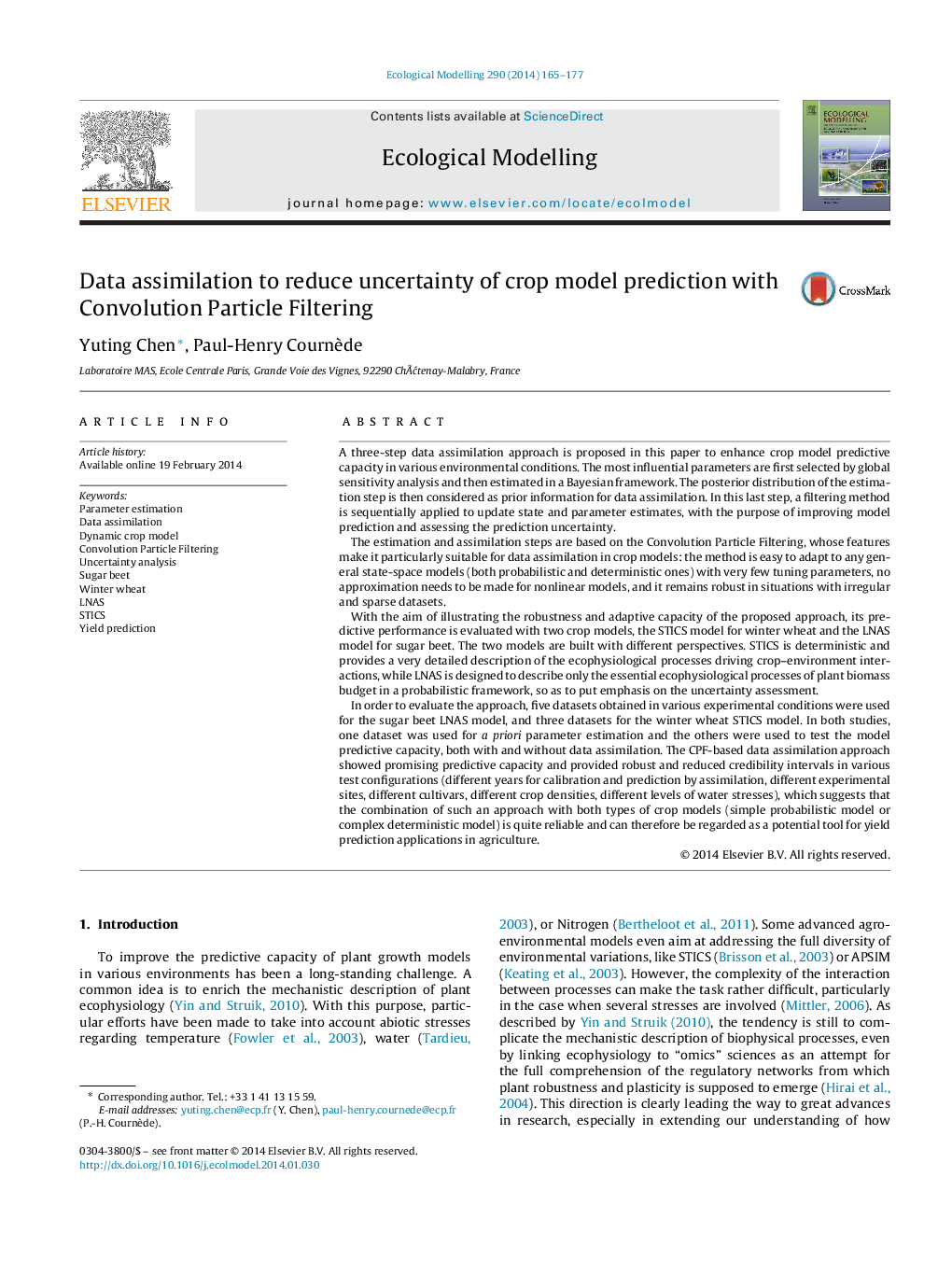| Article ID | Journal | Published Year | Pages | File Type |
|---|---|---|---|---|
| 4375853 | Ecological Modelling | 2014 | 13 Pages |
•Data assimilation via Convolution Particle is applied to LNAS and STICS crop models.•Uncertainty and prediction error are reduced by assimilating early stage crop data.•Fair predictions with proper credibility intervals are obtained in various conditions.•The method applies to both deterministic and stochastic crop models.•Uncertainty assessment in crop models is crucial for prediction reliability.
A three-step data assimilation approach is proposed in this paper to enhance crop model predictive capacity in various environmental conditions. The most influential parameters are first selected by global sensitivity analysis and then estimated in a Bayesian framework. The posterior distribution of the estimation step is then considered as prior information for data assimilation. In this last step, a filtering method is sequentially applied to update state and parameter estimates, with the purpose of improving model prediction and assessing the prediction uncertainty.The estimation and assimilation steps are based on the Convolution Particle Filtering, whose features make it particularly suitable for data assimilation in crop models: the method is easy to adapt to any general state-space models (both probabilistic and deterministic ones) with very few tuning parameters, no approximation needs to be made for nonlinear models, and it remains robust in situations with irregular and sparse datasets.With the aim of illustrating the robustness and adaptive capacity of the proposed approach, its predictive performance is evaluated with two crop models, the STICS model for winter wheat and the LNAS model for sugar beet. The two models are built with different perspectives. STICS is deterministic and provides a very detailed description of the ecophysiological processes driving crop–environment interactions, while LNAS is designed to describe only the essential ecophysiological processes of plant biomass budget in a probabilistic framework, so as to put emphasis on the uncertainty assessment.In order to evaluate the approach, five datasets obtained in various experimental conditions were used for the sugar beet LNAS model, and three datasets for the winter wheat STICS model. In both studies, one dataset was used for a priori parameter estimation and the others were used to test the model predictive capacity, both with and without data assimilation. The CPF-based data assimilation approach showed promising predictive capacity and provided robust and reduced credibility intervals in various test configurations (different years for calibration and prediction by assimilation, different experimental sites, different cultivars, different crop densities, different levels of water stresses), which suggests that the combination of such an approach with both types of crop models (simple probabilistic model or complex deterministic model) is quite reliable and can therefore be regarded as a potential tool for yield prediction applications in agriculture.
